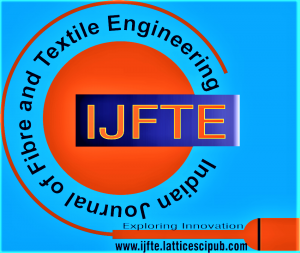![]()
Sustainable Coloration Technologies
Sangeeta Patil1, Ashok Athalye2
1Sangeeta Patil, Department of Fibers and Textile Processing Technology, Institute of Chemical Technology, Mumbai, India.
2Dr. Ashok Athalye, Department of Fibers and Textile Processing Technology, Institute of Chemical Technology, Mumbai, India.
Manuscript received on 07 November 2024 | Revised Manuscript received on 20 November 2024 | Manuscript Accepted on 15 November 2024 | Manuscript published on 30 November 2024 | PP: 1-9 | Volume-4 Issue-2, November 2024 | Retrieval Number: 100.1/ijfte.A241305010525 | DOI: 10.54105/ijfte.A2413.04021124
Open Access | Editorial and Publishing Policies | Cite | Zenodo | OJS | Indexing and Abstracting
© The Authors. Published by Lattice Science Publication (LSP). This is an open-access article under the CC-BY-NC-ND license (http://creativecommons.org/licenses/by-nc-nd/4.0/)
Abstract: The textile industry is witnessing significant transformations in dyeing methods due to technological advancements. Innovations in dyeing techniques have not only revolutionized the way fabrics are colored but also paved the way for more sustainable and efficient practices. This article explores the innovations and advancements in dyeing methods brought about by technology, the impact of these advancements on the industry, and the implications for the future of textile dyeing processes. The successful substitution of hazardous chemicals with more sustainable alternatives like salt-free dyeing, urea replacement, use of natural dyes, and low-temperature soaping enhances efficiency, reduces waste, minimizes environmental impact, and promotes sustainable practices having eco-friendly solutions. These methods reduce water consumption and chemical waste, making them more sustainable alternatives to conventional dyeing processes.
Keywords: Microwave, Plasma, Sonication, Supercritical CO2, Salt-free.
Scope of the Article: Textile Processing and Manufacturing
